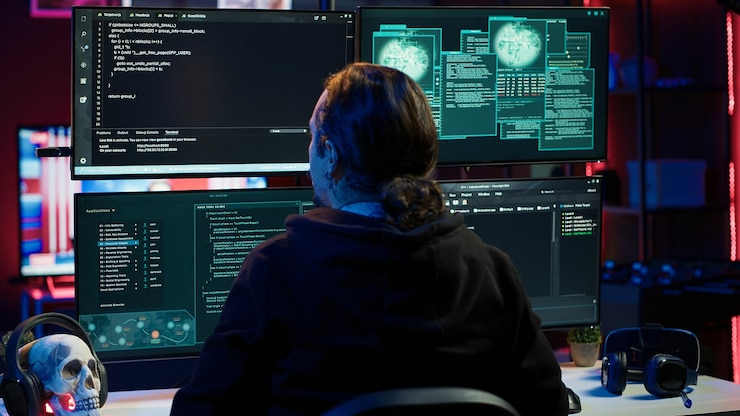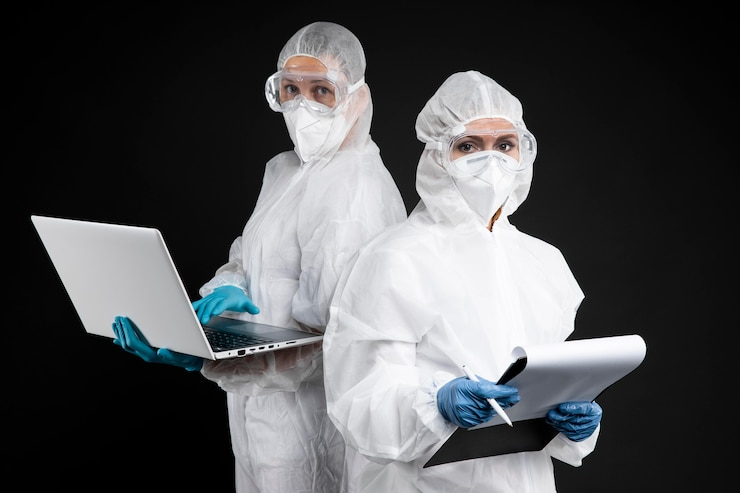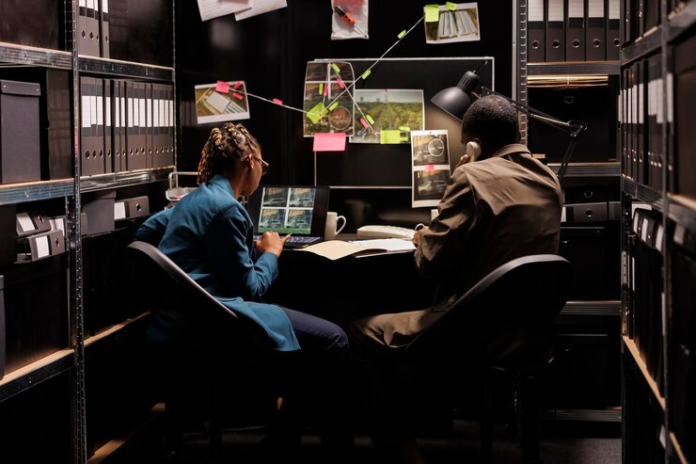In today’s fast-paced world, recording devices capture everything from routine conversations to critical evidence at crime scenes. While playing back an audio file might seem sufficient, true investigative power lies far beyond simple listening. Forensic audio analysis delves deeper—examining waveform intricacies, isolating ambient sounds, and tracking shifts in frequency—to reveal vital clues that could make or break a case. In this blog, we’ll explore why audio evidence demands more than just playback, uncovering the advanced techniques and expertise required to transform raw recordings into compelling, court-ready insights.
Beyond Playback: The Complexity of Audio Evidence:
At first glance, audio appears straightforward: hit “play” and listen. Yet raw recordings often contain distortions, overlapping voices, and environmental noise that can obscure crucial details. A muffled threat in the background, a fleeting utterance, or a subtle acoustic signature might go unnoticed without specialized scrutiny. That’s where forensic audio analysis comes into play—turning ambiguous sounds into interpretable data, thanks to rigorous scientific methods and high-end software tools used by a skilled digital forensic consultant.
Decoding Waveform Patterns:
Waveforms graphically represent sound, plotting amplitude against time. Subtle variations—like a sudden spike in volume or a slight dip—can indicate an utterance or an external interruption. By zooming into these patterns, analysts can isolate specific events, distinguish between speakers, and even estimate the distance of a sound source. According to a study published in the Journal of the Acoustical Society of America, experts employing spectral analysis techniques achieved identification accuracy exceeding 95% in controlled settings. This precision is impossible with mere playback alone; it requires deep dives into the waveform’s hidden complexities.
Unmasking Background Noise:
Ambient noise—traffic hum, wind rustle, or distant chatter—can mask vital speech elements. Removing or reducing these distractions is essential for clarity. Techniques like noise profiling create a fingerprint of the unwanted sound, which can then be subtracted from the recording. This process boosts intelligibility and preserves the integrity of the original dialogue. In a 2019 Federal Bureau of Investigation review, audio enhancement protocols increased speech clarity in 82% of case recordings, directly aiding investigations. Such feats underscore why simple playback falls short: only digital forensic services wield the tools and protocols necessary for true noise reduction.
Tracking Frequency Shifts:
Every sound comprises multiple frequencies. Human speech typically occupies a range between 85 Hz and 255 Hz, but background elements can intrude across this spectrum. Forensic audio analysis employs frequency filters to accentuate desired bands and suppress irrelevant ones. Advanced algorithms detect shifts—such as a speaker’s voice pitch changing under stress—which may offer psychological insights or help verify authenticity. For instance, a frequency anomaly might reveal splicing: if the pitch baseline suddenly shifts, the recording could be a manipulated edit. Such nuanced detection demands more than a standard equalizer; it calls for the expertise of a seasoned data forensic expert, fluent in spectral forensics.
Synchronizing Audio with Visual Evidence:
Audio rarely stands alone. In many investigations, video recordings accompany sound files, demanding integrated review processes. Digital video forensics experts synchronize audio and visual streams, ensuring lip movements match spoken words and that environmental clues align across both mediums. This synchronization can pinpoint the exact moment a weapon is fired or confirm identity through lip-reading on silent footage. By marrying audio insights with visual context, investigators build a holistic narrative—something unachievable through playback in isolation.
Voice Identification and Speaker Profiling:
Beyond what is said, who says it matters immensely. Speaker identification leverages unique vocal characteristics—timbre, cadence, and resonance—to match voices to individuals. Databases of vocal prints allow analysts to compare an unknown sample against known voices, akin to fingerprint comparison. Accuracy rates in speaker recognition systems have climbed above 90% in recent academic trials, provided the input quality is high. Identifying a suspect’s voice on a threatening voicemail, for example, requires meticulously cleaned recordings and forensic-grade analysis—tasks well outside the realm of simple playback.
Detecting Tampering and Splicing:
In an era of digital manipulation, audio tampering runs rampant. Spliced recordings—where segments are cut and reassembled—can convey false narratives. Forensic audio analysis exposes such deceit by examining phase continuity and abrupt waveform transitions. Analysts look for gaps, overlapping patterns, or background inconsistencies that betray edits. A study in the International Journal of Digital Crime and Forensics found that 78% of tampered recordings were detectable through advanced spectral techniques, highlighting the necessity of expert scrutiny rather than casual listening.
Establishing Chain-of-Custody Protocols:
Maintaining an unbroken chain of custody is fundamental to preserving the integrity of audio evidence. From the moment a device is seized, every transfer, copy, and storage event must be logged with precise timestamps and personnel signatures. Secure, tamper-evident containers and write-blockers safeguard original recordings against alteration. Digital hashes verify file integrity before and after analysis, ensuring that any change—even a single bit—is detectable. Robust documentation supports admissibility in court by demonstrating that evidence remained unmodified throughout the investigative process. Without these protocols, enhanced recordings or metadata examinations could be challenged and rendered inadmissible, undermining entire forensic efforts.
Calibration and Validation of Forensic Equipment:
Accurate results hinge on properly calibrated hardware and validated software. Microphones, recording devices, and playback systems must undergo regular calibration checks against known standards to confirm frequency response and sensitivity. Likewise, audio-forensics tools require validation through test recordings containing controlled noise, speech, and distortion parameters. By comparing output against expected benchmarks, analysts can quantify the reliability and repeatability of their enhancement and filtering processes. Regular proficiency tests—such as blind evaluations—ensure that both equipment and personnel maintain high performance levels. This rigorous quality control prevents false positives or overlooked artifacts, reinforcing confidence in the scientific conclusions drawn from audio evidence.
Presenting Audio Evidence in Court:
Effectively communicating technical findings to judges and juries demands clear, comprehension-focused presentation strategies. Visual aids—such as annotated spectrograms, side-by-side waveform comparisons, and frequency-response graphs—translate complex analyses into intuitive graphics. Analysts often prepare concise summaries that explain enhancement steps, filter choices, and confidence levels without jargon. Live demonstrations of original versus processed audio help illustrate the value of forensic audio analysis, allowing courtroom participants to hear distinctions firsthand. Expert witnesses must also anticipate cross-examination by articulating methodologies, validation procedures, and potential limitations. Thoughtful presentation bridges the gap between scientific rigor and legal clarity, ensuring that critical audio insights influence verdicts.
Continuous Professional Development and Standards:
The field of audio forensics evolves rapidly alongside advances in recording technology and signal-processing algorithms. To stay current, practitioners engage in ongoing training programs, workshops, and certifications offered by recognized bodies such as the Association of Certified Audio Forensics Examiners (ACAFE). Regular participation in inter-laboratory comparisons and proficiency tests helps experts benchmark their skills against peers. Adhering to emerging standards—like ISO/IEC 17025 accreditation—ensures that laboratories implement best practices across procedures. Collaborative forums and research publications promote shared innovations, while ethics guidelines reinforce impartiality. Continuous professional development equips analysts to tackle novel challenges and uphold the highest standards of accuracy in forensic audio investigations.
The Role of Metadata and File Authenticity:
Metadata, embedded within audio files, holds crucial timestamps, device identifiers, and encoding parameters. Altered metadata can signal tampering or raise chain-of-custody concerns. Verifying a file’s integrity involves cross-referencing metadata with known device profiles and examining hash values to detect post-recording modifications. Only sophisticated digital forensic consultant services maintain the protocols and legal frameworks to authenticate files for court admissibility, ensuring evidence stands up under scrutiny.
Enhancing Intelligibility in Critical Recordings:
Emergency calls, undercover recordings, and surveillance audio often suffer from low volumes or poor quality. Enhancement tools amplify speech frequencies while dampening noise, striking a balance between clarity and authenticity. Techniques like dynamic range compression and adaptive filtering preserve original nuances, preventing artificial artifacts that could undermine credibility. The National Institute of Justice reports that enhanced recordings led to clearer testimony identification in over 70% of reviewed cases, illustrating that enhancement is indispensable in evidence processing.
Integrating Multidisciplinary Expertise:
Effective forensic audio analysis often overlaps with other digital disciplines. For instance, insights from forensic video analysis can inform audio timelines, while data from mobile device forensics clarifies the context in which a recording was made. A data forensic expert collaborates with audio analysts to extract related logs—such as call records or geolocation stamps—creating a comprehensive evidentiary picture. This multidisciplinary approach ensures no detail is overlooked, providing a robust foundation for legal proceedings.

Addressing Legal and Ethical Considerations:
Handling audio evidence carries legal responsibilities. Analysts must maintain chain of custody, document every enhancement step, and adhere to jurisdictional admissibility standards. Ethical considerations demand transparency: all processing techniques and software settings must be disclosed to opposing counsel. These safeguards protect against challenges in court and uphold justice. Simple playback lacks this rigor, underscoring the need for certified digital forensic services that operate within stringent legal frameworks.
Emerging Technologies in Audio Forensics:
The future of forensic audio analysis shines bright with emerging innovations. Machine learning models now assist in speaker diarization—automatically segmenting recordings by speaker—and predicting the likelihood of tampering. Artificial intelligence tools can highlight anomalies in real time, speeding up preliminary reviews. Meanwhile, cloud-based platforms offer scalable processing for massive datasets. However, these tools still require human oversight: distinguishing between a rare but legitimate acoustic event and a manipulated artifact demands expert judgment from a data forensic expert.
Case Studies: When Analysis Made the Difference
- In a high-profile fraud investigation, enhanced audio revealed a conspirator’s voice whispering instructions during a noisy conference call—evidence that would have remained hidden under generic playback.
- A homicide case hinged on a 911 call so muffled that first responders struggled to understand the victim. Through spectral filtering, analysts isolated the victim’s plea, enabling officers to locate the scene and save the survivor.
- In an intellectual property dispute, timestamp inconsistencies surfaced when metadata analysis exposed that an audio file was created hours after the alleged infringement, leading to case dismissal.
These examples illustrate that only through meticulous forensic audio analysis, combined with complementary services, can justice be served.
Choosing the Right Expert Partner:
Selecting a trusted partner is crucial. Look for firms certified in forensic audio analysis, with accreditations that attest to their methodological rigor. A reputable provider will offer a suite of services—including forensic video analysis, digital video forensics, mobile device forensics, and broader digital forensic services—ensuring a seamless investigation. Their experts should be qualified to testify in court, presenting findings with clarity and authority.
Forensic audio analysis is not a luxury; it is a necessity in modern investigations, providing insights that simple playback can never deliver. The interplay of waveform examination, noise reduction, frequency tracking, and metadata verification transforms raw recordings into reliable, actionable evidence.

Eclipse Forensics stands at the forefront of this field. As a certified leader in forensic audio analysis, forensic video analysis, mobile device forensics, and data forensic operations, Eclipse Forensics combines cutting-edge technology with seasoned expertise. Whether you need an in-depth review of complex recordings or an integrated approach across audio and video domains, they deliver comprehensive, court-ready results.
Contact Eclipse Forensics today to harness the full potential of your audio evidence.

